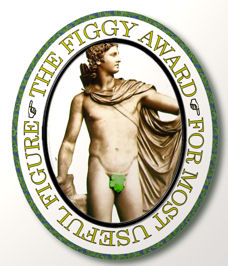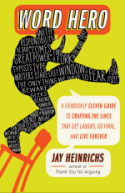Best Figure for Sounding Poetic
 Monday, October 29, 2007 at 03:46PM
Monday, October 29, 2007 at 03:46PM  Figaro is on tour, but he has not shirked his figurative duties. He’s written up the best figure for each of several useful purposes.
Figaro is on tour, but he has not shirked his figurative duties. He’s written up the best figure for each of several useful purposes.
Today’s Figgy for Most Poetic Figure goes to…
anastrophe (an-ASS-tro-fee), the word-order switch. From the Greek, meaning “turning back.”
The anastrophe moves words around like a shell game, keeping the audience attentive and a bit off balance. Figaro likes to use the figure for poetic emphasis or eloquence, or to sound like a Jedi:
“Seldom in my life have I met a dumber man.” (Lawrence Wilkerson)
“It’s hard out here for a lobbyist.” (Emily Yoffe)
“Words he has in spades.”
“Named must your fear be before banish it you can.” (Yoda)
“Not if anything to say about it I have.” (Yoda again)
Be careful not to overuse the anastrophe. Like a good sauce it is; smother the meat you don’t want it to.
Runners-Up:
symploce (SIM-plo-see), the first-and-last repeater.
polysyndeton (polly-SIN-deh-ton), the conjunction connector.


Reader Comments (1)
Either the explanation or the examples of anastrophe are a bit off. I don't see the connection. The Yoda quotes in particular don't go with the other quotes, which are in the nature of a surprising substitution (first two) or a not-very-catchy construction (third).
Also, in your bit on chiasmus, you should have mentioned that it can be used above the level of a sentence or paragraph. The classic graphic novel "The Watchmen" is structured that way, as is a passage in one of the Gospels, according to Bart Ehrman in "Misquoting Jesus." In fact, the presence of the chiasmus is key to his detective work showing where a later editor added material.